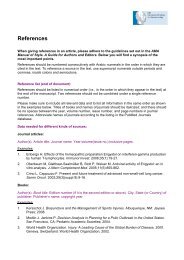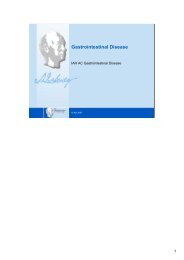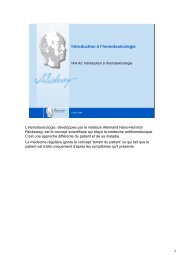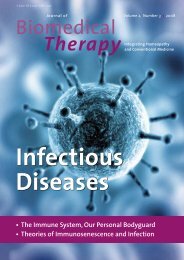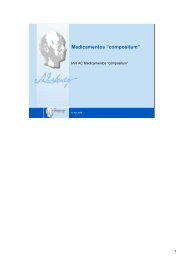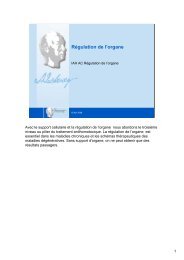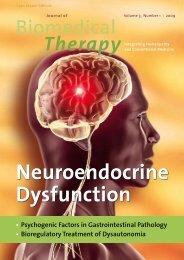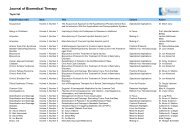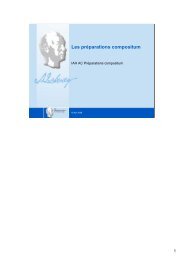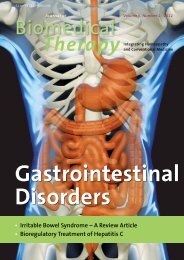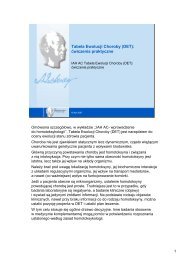Types of Homotoxins
Types of Homotoxins
Types of Homotoxins
You also want an ePaper? Increase the reach of your titles
YUMPU automatically turns print PDFs into web optimized ePapers that Google loves.
Noise pollution<br />
• At levels in excess <strong>of</strong> those at which the auditory apparatus<br />
suffers damage one starts to see the onset <strong>of</strong> temporary<br />
deafness and acoustic trauma<br />
• Loss <strong>of</strong> balance<br />
• Irritability<br />
• Nervousness<br />
• Disturbances <strong>of</strong> heart rhythm<br />
• Loss <strong>of</strong> concentration<br />
© IAH 2007<br />
37<br />
Excessive noise levels, especially when longer time exposed to, may create ear damage (Corti<br />
organ: hair cells damaging). Sounds and noises are present all around us in different levels. Only<br />
high levels can injure.<br />
0 dB: Faintest sound heard by human ear<br />
30 dB: Whisper, quiet library.<br />
60 dB Normal conversation, sewing machine, typewriter<br />
90 dB Lawnmower, shop tools, truck traffic; 8 hours per day is the maximum exposure to protect<br />
90% <strong>of</strong> people.<br />
100 dB Chainsaw, pneumatic drill, snowmobile; 2 hours per day is the maximum exposure without<br />
protection<br />
115 dB Sandblasting, loud rock concert, auto horn; 15 minutes per day is the maximum exposure<br />
without protection<br />
140 dB Gun muzzle blast, jet engine; noise causes pain and even brief exposure injures<br />
unprotected ears. Maximum allowed noise with hearing protectors.<br />
Lots <strong>of</strong> symptoms can be causes by permanent air pollution:<br />
•Deafness<br />
•Irritability<br />
•Nervousness<br />
•Loss <strong>of</strong> balance<br />
•Heart rhythm disturbances<br />
•Concentration loss<br />
37



